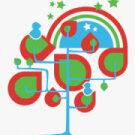Loris Malaguzzi, Italian educator and founder of the early childhood education centers in Reggio Emilia, Italy, developed a unique view of the child and understood how a community-centered culture can give children enriching experiences while natural and beautiful materials can give them endless ways of expressing their views.
We embrace this Reggio Emilia philosophy believing in our children as capable, intelligent individuals who are able to make their own choices with regards to their path of learning. The foundation of the Reggio Emilia approach lies in its belief that the child is beheld as beautiful, powerful, competent, creative, curious and full of potential. Some distinguishing features of the Reggio Emilia philosophy are:
- The image of the child: the child is beheld as beautiful, powerful, competent, creative, curious, full of potential and an active participant in learning
- Parents are an essential component, a competent and active part of their child’s learning experience. They aren’t considered consumers but rather co-responsible partners, and their right to participation is expected and supported;
- Role of space: the physical space fosters encounters, communication and relationships. Children learn a great deal in exchanges and negotiations with their peers, so teachers organize spaces that support the engagement of small groups;
- Teachers and children are partners in learning. Teachers are also seen as researchers as they observe each child and the group of children to learn what the children are interested in, are learning, want to know more about, etc.;
- No pre-set curriculum but rather a process of inviting and sustaining learning. Teachers offer learning experiences, prepare the environment rich in materials and possibilities, then observe and listen to the children. They ask questions and thus discover the children’s ideas, hypotheses and theories. Learning is not seen as a linear process but rather as a spiral progression.
- The power of documentation. Transcriptions of children’s remarks and discussion, photographs of their activity, and representations of their thinking and learning are traces that are carefully studied. Children’s work is displayed throughout the classroom and school; sometimes as series of art pieces, other times in a documentation panel that also describes the children’s actions, words, wonderings and includes photographs of them in action. The documents serve several functions. The most important is for teachers to make hypotheses to project the direction the work and experiences with the children will go so that they can create learning experiences that match the children’s interests and wonderings. Then, once the documentation is organized and displayed it helps parents be aware of their children’s experience. For teachers, it makes it possible for teachers to understand each child better and to evaluate their work and promote their professional growth. For children, the documentation makes them aware that their effort is valued. Finally, documentation can serve as an archive that traces the history of the school.
Whether we are in the classroom, outdoors or out in the community, the children and teachers explore, question, experiment, and work as active co-constructors of knowledge. We design the classroom to encourage and facilitate children learning with each other. Children of this age are capable learners. In these early years, it is nearly impossible to separate intellectual needs from other developmental needs. Therefore, a comprehensive curriculum that meets all of children’s needs (physical, social, emotional, cognitive and language) is ideal, all of which helps create a solid foundation for brain growth and development. We at TCS will also argue that encouraging children to express their creativity is critical!
In addition, we use an assessment piece from The Creative Curriculum© titled Teaching Strategies GOLD to guide our practice and helps us bring focus and order to assessing children’s progress and documenting their development in individual portfolios. We combine a strong play-based philosophy and the Reggio Emilia pedagogy to create a rich, developmentally appropriate environment at Takoma Children’s School.
How does it work?
Symbolic languages including drawing, sculpting, dramatic play, writing, building with blocks and manipulatives, and painting are used to represent children’s thinking processes and theories. These are some of what Reggio Emilia educators will refer to as “the hundred languages of children.” As children work through problems and ideas they are encouraged to depict their understanding by making a variety of representations. As their thinking evolves, they are encouraged to revisit their representations to determine if they are representative of their intent or if they require modification. Teachers and children work together towards an expressed intent.
As facilitators of active learning, TCS teachers help guide children on their path and use documentation to capture that journey.
